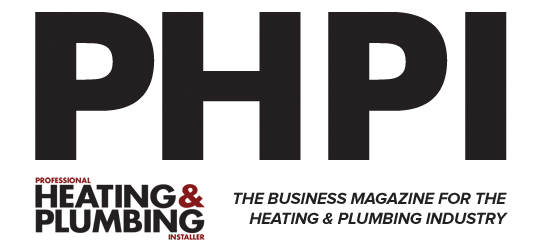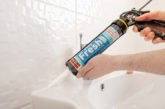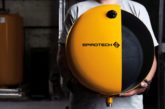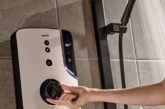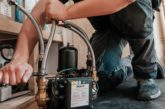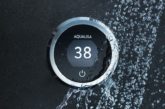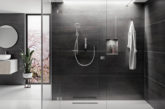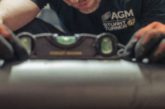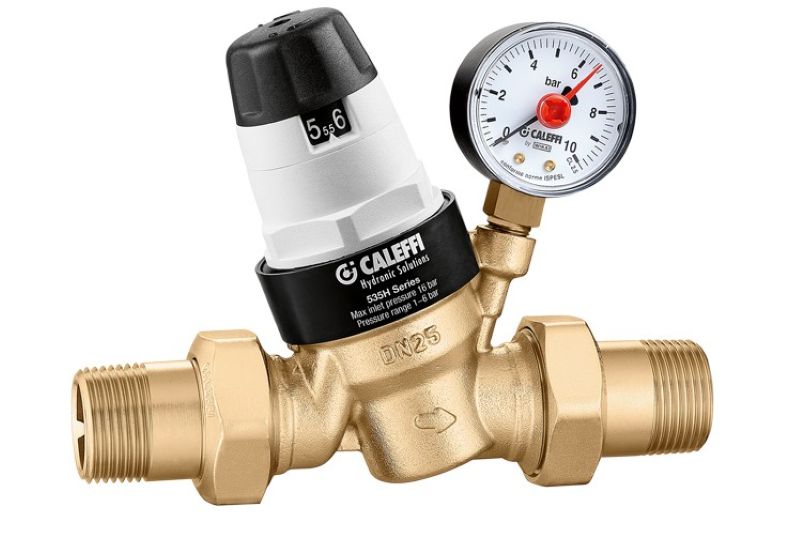
In this technical overview, Ed Morris, Technical Manager at Altecnic, explains all about PRVs, covering why they’re essential, to how they function, and how to select, install, and troubleshoot them.
Q. Why do I need a Pressure Reducing Valve (PRV)?
PRVs are installed in residential, semi-commercial and public buildings to reduce and stabilise the inlet water pressure. If the mains or boosted water pressure is too high, then the heating system may not work as intended and the components in the system may be susceptible to damage. The force of water from a tap or other outlet for example, may be too fierce which could cause spray-back. PRVs are designed to reduce water pressure and maintain it to a set level preventing damage to those components installed downstream of the PRV.
Q. How does a PRV work?
A PRV opens and closes an aperture based on the set compression of a spring pushing on a diaphragm. The spring tension is set or adjusted via a plate. This relates to a “bar” pressure setting point. Once in operation the pressure of water pushing on the diaphragm is countered and adjusted by that of the spring.
Q. Which PRV should I use?
There is a selection to choose from based on the application (cold water or hot and cold water service), with or without a pressure gauge, set using a screwdriver or a Dial up setting.
Q. What is ‘Drop-Tight’ control?
When a PRV operates under both flow and no-flow conditions, this is known as “Drop-Tight’ control. “Drop-Tight” control prevents the pressure from “creeping” (an increase in downstream pressure under no-flow conditions).
Q. Can the end user adjust the pressure themselves?
Yes, as the valve works off a spring and diaphragm you can set the outlet pressure by turning the screw on the top of the plastic cover (533 series) or the by turning the pre-adjustable dial up knob complete with pressure setting indicator (535 series).
Q. Can the PRV be installed in any orientation?
The PRV has a flow direction arrow cast onto the body – the valve must be installed with the flow in the direction of the arrow.
The valve can be installed horizontally or vertically but must not be installed upside down. If the valve is installed horizontally than the cartridge should be vertically mounted.
Q. Where should I install a PRV?
The PRV should be installed downstream of the main isolating valve on the cold-water inlet. In apartments these may also be installed after the main inlet valve of the recirculating hot water system. As you may need to access the cartridge for future service or replacement, care should be taken in respect of where the valve is installed so that you have sufficient room to maintain the valve.
Q. Do I need a strainer in the system to protect the PRV?
The strainer may already be installed as part of the system design. However, Altecnic 533 and 535 series PRVs both incorporate a strainer screen as part of the cartridge assembly.
Q. Does varying the inlet pressure have an influence on outlet pressure?
No, providing the valve is within its technical parameters. PRVs are described as “fully balanced”, this means that varying inlet pressures are compensated by means of the geometry of the valve and therefore have no influence on the outlet pressure.
Q. Do I need a pressure gauge?
Yes, in order to check or monitor the pressure in the system. Some engineers prefer to use an independent gauge, but there is an option for the gauge to be supplied with the PRV. Some models are supplied with a gauge port and the pressure gauge can be purchased separately as an accessory if required.
Q. What are the maximum inlet and outlet pressures suitable for a PRV?
The maximum inlet pressure is 16 bar or 25 bar. Outlet pressure setting range for the 533 & 535 series is 1 to 5.5 bar or 1 to 6 bar depending on the valve series selected with a maximum pressure reduction ratio of 3:1.
Common Trouble Shooting Issues
‘The dynamic PRV is showing a higher downstream pressure than the set point’
Due to the design of the dynamically controlled valve there is no total shut off from the valve seat. If there is no demand the pressure can creep up without regulation.
Note: this doesn’t mean the valve is faulty!
‘The PRV does not maintain set pressure’
This could be due to impurities that deposit on the valve seat, causing leakage resulting in an increase in downstream pressure. Scale deposits are the most common cause of PRV malfunction. Clean the cartridge and integrated strainer screen. If the problem persists, install an independent Y strainer upstream from the PRV.
Pressure increases downstream of the PRV can also be caused by back pressure due to a defective check valve being installed, or a check valve not being installed at all. This should be replaced or installed.
‘The PRV isn’t working!’
Is the downstream water pressure less than the minimum I bar operating pressure of the PRV? If it is less than 1 bar do you need a PRV? Is the PRV installed with the flow in the direction of the arrow on the body of the valve?
‘There’s no water pressure!’
If there is no water pressure on the hot and cold supply, then initially check the main isolating valve (to check that it is open) and the strainer (if installed downstream from the isolating valve) to see if it is blocked. Also check the PRV as this may be blocked with debris.
‘There’s hammering/vibrations in the pipework!’
These noises can be caused by multiple number of potential issues, not necessarily the PRV. Issues can be as a result of improperly secured pipes or issues with other products in the system. Sometimes it can be a combination of these contributing factors. If the hammering noise is originating from the PRV then this should be investigated further, otherwise it is likely that the problem is elsewhere in the system.
Water hammer is one of the main problems which can affect PRVs. It is recommended to install special devices to absorb water hammer when fitting PRVs in systems at risk.
IMAGE: Altecnic

